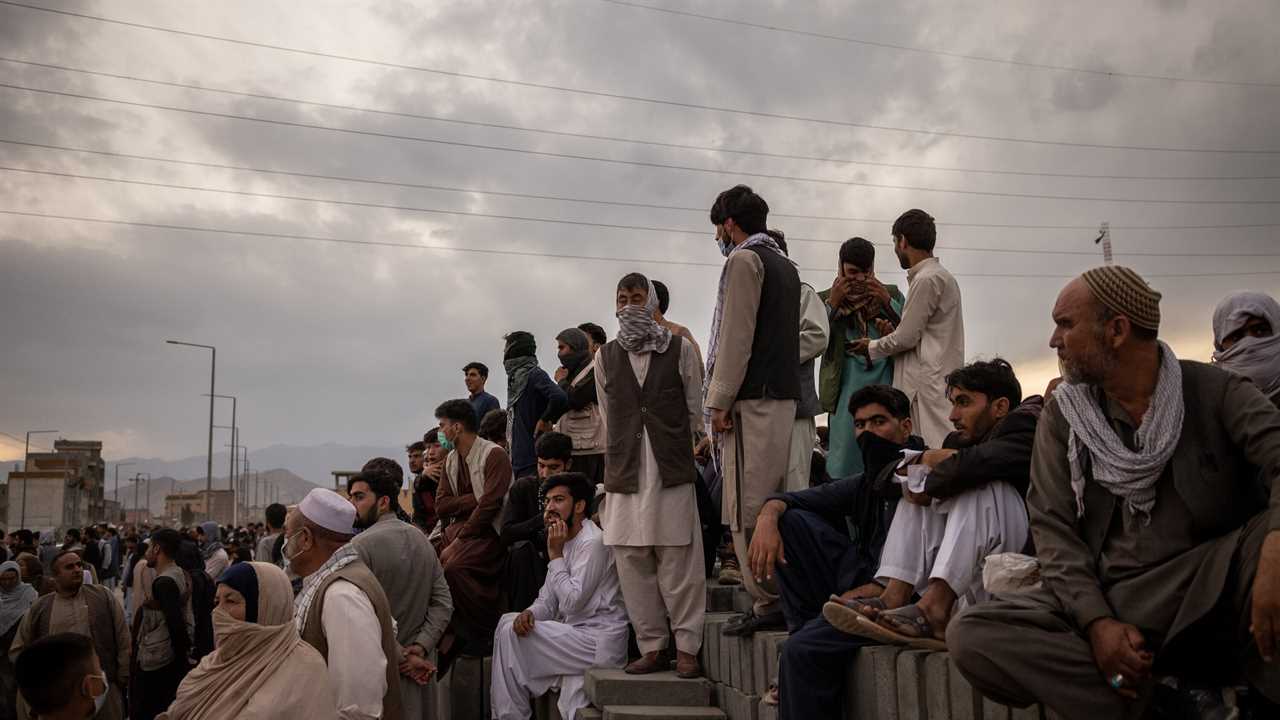
WASHINGTON — During the frantic evacuation from Afghanistan in August, the American troops securing the Kabul airport against suicide bombers and other dangers were not alone. At the direction of the C.I.A., agency-trained Afghan counterterrorism squads helped patrol the perimeter, secure the gates and get American citizens through them.Those Afghan commandos stayed to the end, and were among the very last allies to be evacuated. But even as some 80,000 other Afghan refugees quickly reached the United States, hundreds of the C.I.A.-backed fighters and their families are among thousands who remained stuck at a sprawling refugee compound in the Emirati desert.As weeks have turned into months, some members of the C.I.A.-backed squads — which at times over the past two decades were accused of killing civilians and other wartime abuses — say they feel abandoned, victims of a chaotic withdrawal in which the speed with which departing Afghans reached the United States was often determined by nothing more than what kind of plane they left on.Biden administration officials say they are on track to eventually come to the United States.But the plight of the commandos underscores the issues continuing to plague the extensive evacuation, vetting and resettlement efforts five months after the abrupt Taliban takeover of Afghanistan in August.At the most basic level, all of the Afghans who helped the NATO forces during the 20-year Afghanistan war and are now in Abu Dhabi are fortunate: They got out with their families and are safe. Since August, there have been a slew of nonjudicial killings carried out against former government security force members who remained in Afghanistan.But interviews with half a dozen officials involved in the effort and people familiar with the accounts provided by some of the commandos help illustrate the major differences in how Afghans who got out are being treated based on which planes they boarded at the Kabul airport.Afghans who got onto American military planes are the more fortunate: They were taken to bases where deals with host countries allowed them to stay for only a few weeks. After they were vetted at such temporary transit locations, the Homeland Security Department invoked a rarely used “humanitarian parole” power to swiftly move them to the United States.As a result, nearly all of those roughly 80,000 Afghans have now already been able to reach the United States. Most of them have been resettled and are starting new lives — even though their applications for permanent status with a Special Immigrant Visa, or S.I.V., are still being processed. By contrast, those Afghans who boarded non-American evacuation flights, such as charters operated by the United Arab Emirates, were taken to facilities in host countries where they can stay indefinitely, including the U.A.E.-run compound known as Emirates Humanitarian City. A significant portion of its roughly 9,000 refugee residents are C.I.A.-trained fighters and their families, according to people familiar with the matter.Because those Afghans in places like Humanitarian City are safe, the United States is processing them through regular bureaucratic order, officials said. As a result, they are being required to wait there until their S.I.V. applications are completed — which can take many months. Requirements for vaccinations and medical tests can further slow the process.Biden administration officials were reluctant to talk about or acknowledge the C.I.A.-backed squads specifically. But they insisted that all the evacuees in Humanitarian City and other countries would be treated fairly.“We’re working to develop a standardized process that ensures we make good on our commitments to our Afghan allies,” Emily Horne, a National Security Council spokeswoman, said in a statement. “We cannot underestimate the anxiety that they and their families must feel. Those of us working on this want to alleviate that anxiety as best we can and make good on our country’s pledge to them.”One official said that about 500 S.I.V. applicants a week reach a stage in the process where the State Department places them in a queue for eventual transfer to the United States, and that about a quarter of the population of refugees in Humanitarian City is now at that stage.But that official also said even for that group, it was likely to be several more months at best before those applicants would complete other steps in the visa process. Another official said it was likely to be another five months before the C.I.A. fighters and their families were able to come to the United States.ImageA crowd in Kabul last year applying for the Special Immigrant Visa program, which has resettled thousands of Afghans and their family membersBy: Julian E. Barnes, Thomas Gibbons-Neff and Charlie Savage
Title: C.I.A.-Backed Afghan Fighters Are Still Waiting to Reach U.S.
Sourced From: www.nytimes.com/2022/01/25/us/politics/cia-afghan-fighters-commandos.html
Published Date: Tue, 25 Jan 2022 10:00:22 +0000
Read More
Did you miss our previous article...
https://badpoliticians.com/us-politics/russia-steps-up-propaganda-war-amid-tensions-with-ukraine
 UK PoliticsWorld PoliticsVideosPrivacy PolicyTerms And Conditions
UK PoliticsWorld PoliticsVideosPrivacy PolicyTerms And Conditions
